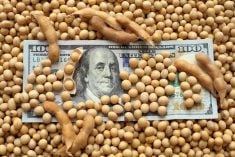CNS Canada — This week’s acreage estimates from Statistics Canada could bring an end to canola’s recent chart surge upward — or could give futures the impetus to move even higher.
The dominant July contract closed Wednesday at $535 per tonne, a gain of $8 from the previous Wednesday’s close.
Prairie farmers on Friday will get their first projections on how much canola will be planted in Canada. At this stage, most pundits expect this year’s crop to approach or exceed 24 million acres — significantly larger than last year’s total of 23 million.
Read Also

Federal agriculture minister to meet with Chinese officials, business leaders
Federal Agriculture Minister Heath MacDonald is in China this week in hopes of strengthening agricultural ties between the countries.
Even without that report, one analyst in Winnipeg says canola faces factors that could take it much lower.
“Once seeding is done and if China and the U.S. step back on tariffs, canola might have a bigger downside,” said Keith Ferley of RBC Dominion Securities.
The potential for a strike at Canadian Pacific Railway also looms over the market — and road bans have sprung up in rural areas, making cash selling difficult for farmers.
“They’re also busy seeding so if you need (canola) you will have to pay up to get it out of their hands,” he said.
The Canadian dollar’s recent softening has also put some legs under the canola market. Ferley pegged immediate overhead resistance in the July contract at $545 per tonne and floor support at $530.
“The May-July spread is still a big feature and trading at a pretty good inverse,” he said.
Both soybeans and soymeal have shown some support recently, which has also helped canola weather the influence of slumping vegetable oil markets.
— Dave Sims writes for Commodity News Service Canada, a Glacier FarmMedia company specializing in grain and commodity market reporting.











